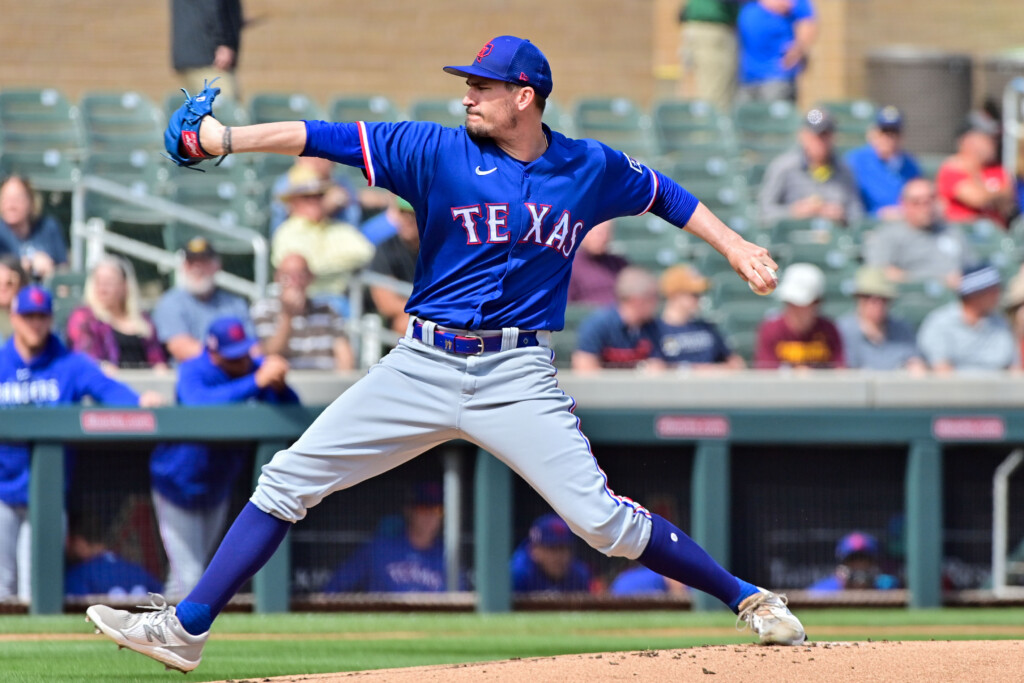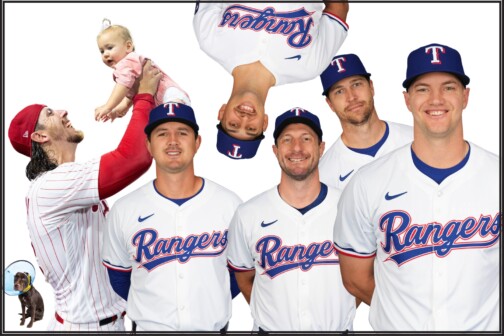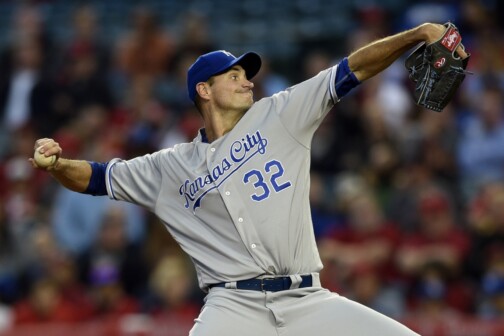The Texas Rangers have recorded six consecutive losing seasons for the first time in their not-so-stellar history. In related news, the club is feverishly trying to become relevant for the first time this decade. No small task in a sports market that also includes Luka Doncic, Kyrie Irving, a first-place hockey team, and the Dallas Cowboys.
Talking a three-time World Series-winning manager in Bruce Bochy out of retirement is a great start. So is Ray Davis dishing out more than $800 million in free agency on proven veterans like Corey Seager, Marcus Semien, Jon Gray, Jacob deGrom, Nathan Eovaldi, and Andrew Heaney. That’s what happens when you finally spend like a team in a top-five market. How about we stay here for a while, huh?
But winning is the only thing guaranteed to hold North Texas’ attention for long, which brings us to baseball’s new rule changes. No, not the pitch clock, which your dad or uncle may bristle at even though the average spring game is down from 3:01 to 2:36 this year. I’m not talking about the action on the basepaths, either, now that pitchers are limited to two disengagements with the rubber and the bags have swollen from 15 inches by 15 inches to 18 inches by 18 inches. In this case, size definitely matters: base stealers have better than an 81 percent success rate this spring.
The rule change that will have the greatest impact on Texas’ fortunes is the elimination of the infield shift. So far, spring hitters have a .323 average on balls in play (BABIP). That is way up from a .290 BABIP in the 2022 regular season, and just like the faster pace, it’s led to a better product. More baserunners plus more action on the basepath equals a more watchable sport. Heck, it might even get those who fell out of love with the sport to come back from time to time. Rob Manfred certainly hopes so.
However, much to baseball’s chagrin, the reality is the sport is still very much a three-true-outcome game, because we are in an era where pitchers throw harder than they ever have before in history. The strikeout rate, which was 7.06 per game in the year 2010, was up to 8.40 last season. In related news, per MLB Statcast, the average major league fastball is up to 93.9 miles per hour. More pitchers hit 100 miles per hour than ever since Statcast kept track of velocity beginning in 2015.
Walks, dingers, and strikeouts will still very much be the order of the day for your two-and-a-half-hour commitment as a viewer. And while that can be boring, that might be the key to the Rangers playing meaningful games in August and September for the first time in what feels like forever.
You can thank the rotation, of all things, for that. It isn’t just that deGrom, Eovaldi, Heaney, Gray, and Martin Perez are a top-three rotation in the American League when healthy (a huge caveat, I know). It’s how they go about their business. There have been other good Texas rotations over the past 50 years. Some have included Hall of Famers (Nolan Ryan, Ferguson Jenkins, Bert Blyleven). Others have featured All-Stars (Yu Darvish, Cole Hamels, C.J. Wilson). None of them have had this level of nasty, swing-and-miss stuff.
Which is saying something considering how bad the Rangers were at striking hitters out last season. Texas checked in at 21st in the majors, with 8.24 strikeouts per nine innings. Just one club below Texas (St. Louis, at 30th) reached the playoffs last season. A lot of this was due to inadequate pitching: the Rangers’ team ERA of 4.22 was 22nd in baseball.
But Perez, the club’s best starter, only struck out a career-best 7.7 batters per nine innings this past season. (He got outs by limiting hard contact, matching Cleveland’s Shane Bieber for the seventh-most groundball outs in the majors with 223. Curious to see if that’s the case with shifts being banned this season. TBD there.)
Aside from Gray, who battled injuries all season, Texas didn’t have a starter who could consistently miss bats. That was concerning enough in the era of the shift, when Texas could manipulate defensive alignments to take away hits. Now that shifting is banned, the concern might be more significant.
There is good news. The Rangers’ rotation signings may solve this problem. It starts with deGrom, who is the most dominant pitcher on Earth when he’s right. Despite missing a good chunk of 2022, the flamethrower had an absurd 39.3 K–BB rate, which led baseball by a healthy margin at 9 percent better than the Braves fireballer Spencer Strider (albeit in much fewer starts). He was paid $185 million for a reason, and it was on display during his spring debut against Kansas City: he threw 20 strikes in his first 24 pitches. This past Sunday he fanned four Mariners over three frames in his first A-game start in the desert, touching 100 miles per hour along the way.
On his own, deGrom is a rotation-altering talent. But general manager Chris Young didn’t stop there. Eovaldi struck out over 22 percent of the batters he faced in 2022 with Boston. His average fastball velocity was down a smidge, but it still checked in at nearly 96 miles per hour and has reached 99 in a few spring starts with Texas. Add in a splitter and a curve, plus plenty of movement, and opposing hitters swing at more than 36 percent of his pitches outside the strike zone. That is better than league average.
Heaney, meanwhile, had a dazzling 13.62 K/9 in 14 starts and 16 total appearances with the Dodgers last year. That was good enough for the third-best mark among starting pitchers in 2022. The veteran lefty doesn’t bring the same velocity as Eovaldi or deGrom, but dudes chased his stuff more than ever due to his slider. That led to a fun 38 percent chase rate at pitches outside the zone from opposing hitters while he wore Dodger blue, which isn’t all that different than Rangers blue, right?
Add in a (hopefully) healthy Gray, and a rotation that had one strikeout artist a year ago now boasts four.
Nobody reading this should assume all of these guys will make 30-plus starts. Even 20 to 25 apiece would be an excellent outcome. But for the start of this season and the next few years, gone are the days of a full rotation of guys pitching to contact and hoping to get through the order two or three times on a good night.
Which, given the state of the infield defense, is essential. Texas committed the third-most errors in the A.L. last season (96), turned the fewest double plays in baseball (93), and checked in at No. 23 overall in fielding percentage.
Corey Seager isn’t a great defensive shortstop between his pedestrian range and his 17 errors in his first season in Texas. Marcus Semien is, but he’s playing second base, and he’s also not getting any younger. Josh Jung could be the eventual face of the franchise, but no scout will describe him as a plus glove or arm at third base. A move across the diamond could be in his future. Speaking of, reigning Silver Slugger Nathaniel Lowe was maybe the worst defensive first baseman in the majors last year, with a -1.9 defensive WAR. Not good at all, but keep hitting, my man. All of this was before the elimination of the shift.
Not ideal. But a great way to avoid getting hurt by your shaky infield is to make sure hitters don’t get a chance to test it. That’s what deGrom, Eovaldi, Heaney, and Gray will do.
The infield defense is what it is, and the less said about the bullpen, the better. But a rotation that induces whiffs could be a great deodorant. Maybe, just maybe, Rangers fans will be smelling winning baseball for the first time in more than six years, and for the first time ever at their spiffy new stadium. Smell it up. Smell it all up.
Author







